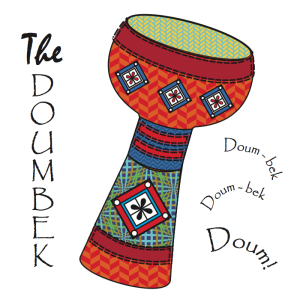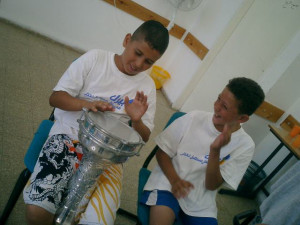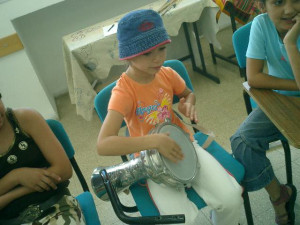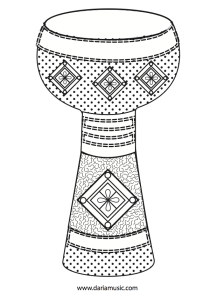 Music is a great way to explore the world with your kids. If your cultural heritage is from the Middle East, doumbek and darbuka drums are probably part of the soundtrack of your life. If you’re adding music to your family’s fun or studying that region, then this easy-to-play drum is a great first instrument for any child.
Music is a great way to explore the world with your kids. If your cultural heritage is from the Middle East, doumbek and darbuka drums are probably part of the soundtrack of your life. If you’re adding music to your family’s fun or studying that region, then this easy-to-play drum is a great first instrument for any child.
Doumbeks and Darbukas
Both the doumbek and darbuka are goblet shaped played throughout the Middle  East, Turkey and North Africa. There are lots of names for each drum and plenty of variations for the spelling of each name. For doumbeks, you might see “dumbec”, “dumbek” or “doumbec”. Darbuka style drums are also called debuka, dumbelek tablah, tarabuka and toumperleki.
East, Turkey and North Africa. There are lots of names for each drum and plenty of variations for the spelling of each name. For doumbeks, you might see “dumbec”, “dumbek” or “doumbec”. Darbuka style drums are also called debuka, dumbelek tablah, tarabuka and toumperleki.
Historians think that these drums date back to Ancient Babylonia and that the name comes from the Arabic word “darba”, meaning “to strike”.
How Do You Play?
 One of these simple Middle Eastern drums, there are three basic sounds. The “doum” sound comes from striking the drum in the center. Tapping the drum near the edge produces a higher sound called a “tek”. Tapping then muting the drum creates a third sound called a “pa”.
One of these simple Middle Eastern drums, there are three basic sounds. The “doum” sound comes from striking the drum in the center. Tapping the drum near the edge produces a higher sound called a “tek”. Tapping then muting the drum creates a third sound called a “pa”.
What If You Don’t Have a Drum?
Don’t have a drum? Although it may not sound exactly the same, you can also tap on a round container in these three different ways and make all the basics sounds you might hear on a doumbek or darbuka. You’d be surprised how good a “recycled drum” may sound when using even the most basic material found around your home or garage!
Although some are plain, many doumbeks and goblet drums have beautiful folk or mosaic patterns that wrap around the body of the drum. In the coloring page below you can create your own colorful Middle Eastern drum.

